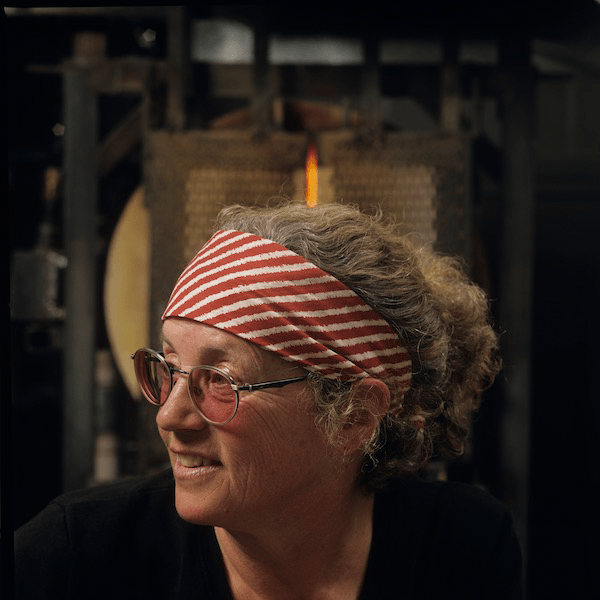
Flo Perkins discusses the spining technique she first used at UCLA for her “Earthquake ware.”
01:35Flo Perkins discusses the technique she used for her “Earthquake ware.” Oral history interview with Flo Perkins by Barb Elam, conducted via telephone, August 20, 2019, Bard Graduate Center. Clip length: 01:28.
Flo Perkins: At UCLA [University of California Los Angeles] in my master’s program, Dick [Richard] Marquis was the professor and—I was making what was called ‘Earthquake ware,’ in other words I was trying to—improving my glass blowing skills and just making cups and plates and so on. And I took white silicone and I put it all over the outside in—as little prunts. A prunt is a piece of glass. It’s German technique and there is one of the glass history books has a beautiful—beer stein that’s all prunted—it’s like little chocolate chips all coming all off the glass and it’s made all in glass? So you take the hot glass and you touch it down and pull it back, snip it off. And they made those pieces in the Black Forest, because everybody ate with their greasy hands, and so then they could hold the cup. The glass cup didn’t slip out of your greasy hands. And that was a—look and a technique that I’ve always—I just loved it. It’s thorny looking, you know, but it’s not hard, and so the ‘Earthquake ware’ was that, but the prunts were silicone adhesives, and they were white. And so they were all over these cups, the concept being if you dropped it, it bounced or if there was an earthquake, it would survive the earthquake, because the glass was protected by this rubber. And you can find that in my work somewhere. The ‘earthquake ware,’ it had a moment—I moved on to something else—and that’s what started me with the silicone.